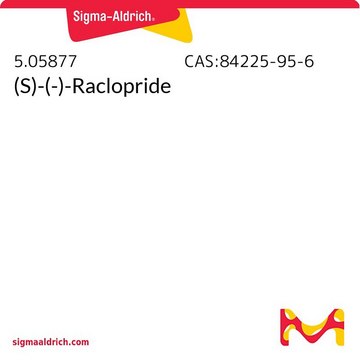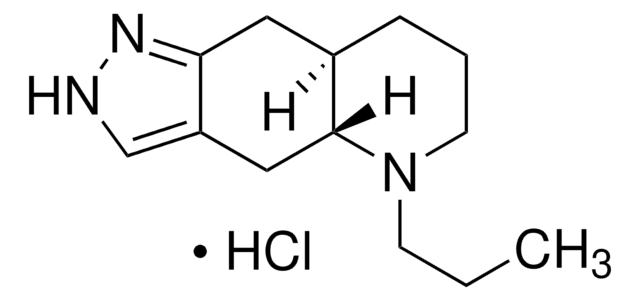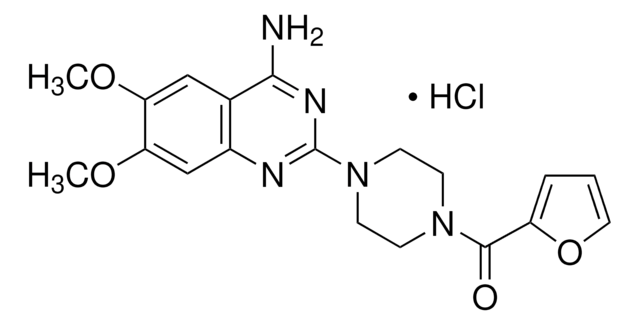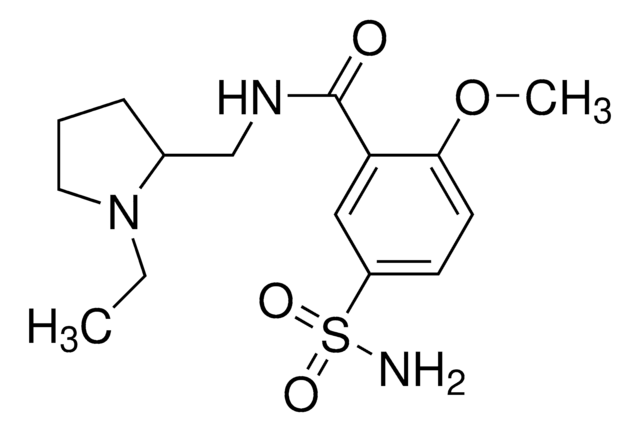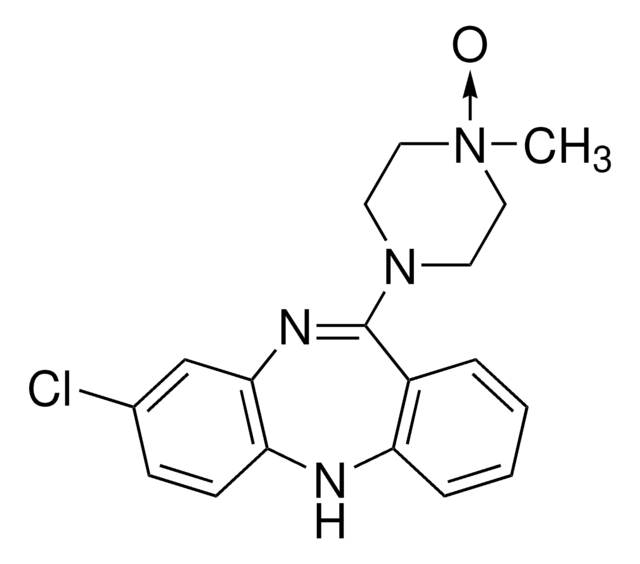Wichtige Dokumente
R121
S(−)-Raclopride (+)-tartrate salt
>97%, solid
Synonym(e):
3,5-Dichloro-N-(1-ethylpyrrolidin-2-ylmethyl)-2-hydroxy-6-methoxybenzamide (+)-tartrate salt
About This Item
Empfohlene Produkte
Assay
>97%
Form
solid
Farbe
white
Löslichkeit
H2O: 89 mg/mL
SMILES String
O[C@H]([C@@H](O)C(O)=O)C(O)=O.CCN1CCC[C@H]1CNC(=O)c2c(O)c(Cl)cc(Cl)c2OC
InChI
1S/C15H20Cl2N2O3.C4H6O6/c1-3-19-6-4-5-9(19)8-18-15(21)12-13(20)10(16)7-11(17)14(12)22-2;5-1(3(7)8)2(6)4(9)10/h7,9,20H,3-6,8H2,1-2H3,(H,18,21);1-2,5-6H,(H,7,8)(H,9,10)/t9-;1-,2-/m01/s1
InChIKey
QULBVRZTKPQGCR-NDAAPVSOSA-N
Angaben zum Gen
human ... DRD2(1813)
Anwendung
- to study the role of the D2 receptor in mediating ventrolateral PAG (vlPAG)/dorsal raphe dopaminergic antinociceptive effect in animals
- in pharmacological and behavioral studies performed with Thap1 null mice
- to determine the relationship between Ca2+ transients and dopamine neuron activity in rats
Biochem./physiol. Wirkung
Verpackung
Vorsicht
Lagerklassenschlüssel
11 - Combustible Solids
WGK
WGK 3
Flammpunkt (°F)
Not applicable
Flammpunkt (°C)
Not applicable
Persönliche Schutzausrüstung
Eyeshields, Gloves, type N95 (US)
Hier finden Sie alle aktuellen Versionen:
Besitzen Sie dieses Produkt bereits?
In der Dokumentenbibliothek finden Sie die Dokumentation zu den Produkten, die Sie kürzlich erworben haben.
Kunden haben sich ebenfalls angesehen
Unser Team von Wissenschaftlern verfügt über Erfahrung in allen Forschungsbereichen einschließlich Life Science, Materialwissenschaften, chemischer Synthese, Chromatographie, Analytik und vielen mehr..
Setzen Sie sich mit dem technischen Dienst in Verbindung.